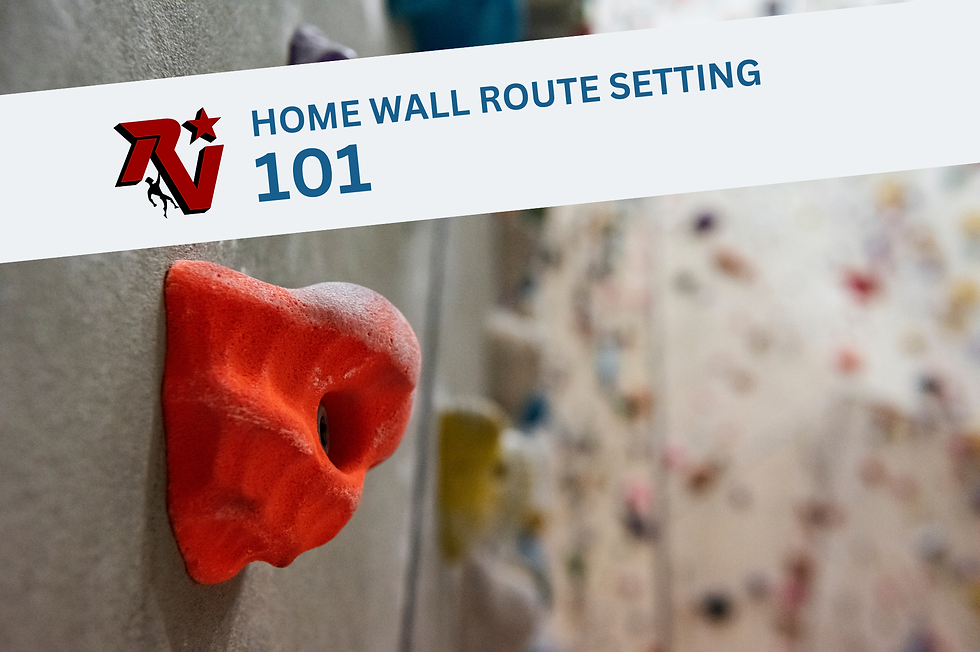Does Hangboarding Build Stronger Skin for Better Rock Climbing Performance?
- Dovi Hirsch
- Nov 22, 2023
- 3 min read
by Christopher Schafenacker

So, you’ve got a climbing trip coming up and while your psych is high, you’ve been buried in books or work or whatever and you’re not exactly fighting fit. Who cares, right? After all, climbing trips aren’t about sending hard, they’re about exploring a new area, connecting with friends, and indulging in the simple joy of moving over rock—all things you can do no matter your fitness. And yet there’s the pesky issue of skin… A soft body may not stop you from enjoying your trip, but soft tips certainly will. Thus we delve into: can you hangboard your way to good skin? The answer is: it depends.
What is “Good Skin,” Anyway?
If you’ve been climbing for any length of time, you’ve participated in more conversations than you’d care to admit about your skin. You’ve complained about it being too thin, too hard, too dry; you’ve wailed over splits, filed in fear of flappers, and talked in circles about maintenance rituals. Nevertheless, if you’re like most climbers, you’ve never really pinned down what “good skin” actually means.
That’s because it’s obvious, you say. Good skin is, well, uh… good skin. It’s that tough, leathery exterior coating you gain after countless hours in the gym or on the rock. It’s calluses. It’s tips so rough no normal human will let you touch them. It’s good skin.
But here’s the thing: it’s not. It’s not obvious. Indeed, it’s so unobvious that the above definition misses the mark entirely. Good skin—at least if by this we mean skin good for climbing—isn’t hard and it isn’t callused. In fact, it’s the opposite. According to the study “Measuring Lifting Forces in Rock Climbing: Effect of Hold Size and Fingertip Structure” (Roger Bourne, et al.; Journal of Applied Biomechanics, 2011), climbers’ ability to crimp micro-edges is mostly about the amount of soft tissue (“finger pulp”) in their fingertips and the friction created when their tips “squish” to accommodate the shape of an edge. In other words, if you want the kind of skin needed to pull hard on small holds, you want soft, supple tips that maximize the surface area that meets the rock. And if you want to be able to pull hard for days on end, you want pain tolerance, not hands so hard they could be mistaken for cattle gloves.
Can you hangboard your way to good skin, then? If you have a wooden hangboard with rounded edges, yes. Wood does not abrade your skin the way plastic or resin does and a rounded edge means you can bear down hard on even the smallest crimps without risking injury. Hangboarding on a wooden hangboard thus not only increases finger strength but safely dials up your pain tolerance without shredding your tips. A plastic or resin hangboard, on the other hand, is more likely to wreck than prep your fingers for an upcoming trip and so is the opposite of what you want if you’re looking to get your skin fighting fit in a hurry.
Featured Climbing Training Gear
Maverick: The on-the-go, bring it anywhere hangboard. On a family road trip to keep your fingers in shape. We like to bring this to the crag with us to keep our fingers warm—without losing skin on mediocre warm-ups—at that steep, thuggy sport crag.
Pinch Blocks: Don't let pinch strength stop you from sending! Use it while hanging, lifting, and even for one arm hangs; featuring various widths for pinching, a 20 mm edge, and a jug.
The Rock-Stah: Our handcrafted version of a traditional hangboard, with curving crimp rails to help alleviate unnecessary strain on your pulleys. Because ain’t no one got time for a finger injury…
The Rocket Wall: Available in 6’ and 8’ widths, it’s been tough for us to keep up with the demand for this innovative home climbing wall solution. Slightly overhanging, the Rocket Wall is big enough to set routes on, or to build a systems board.











Comments